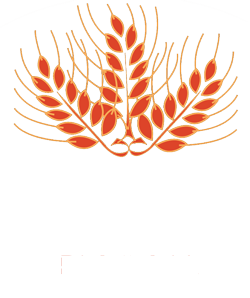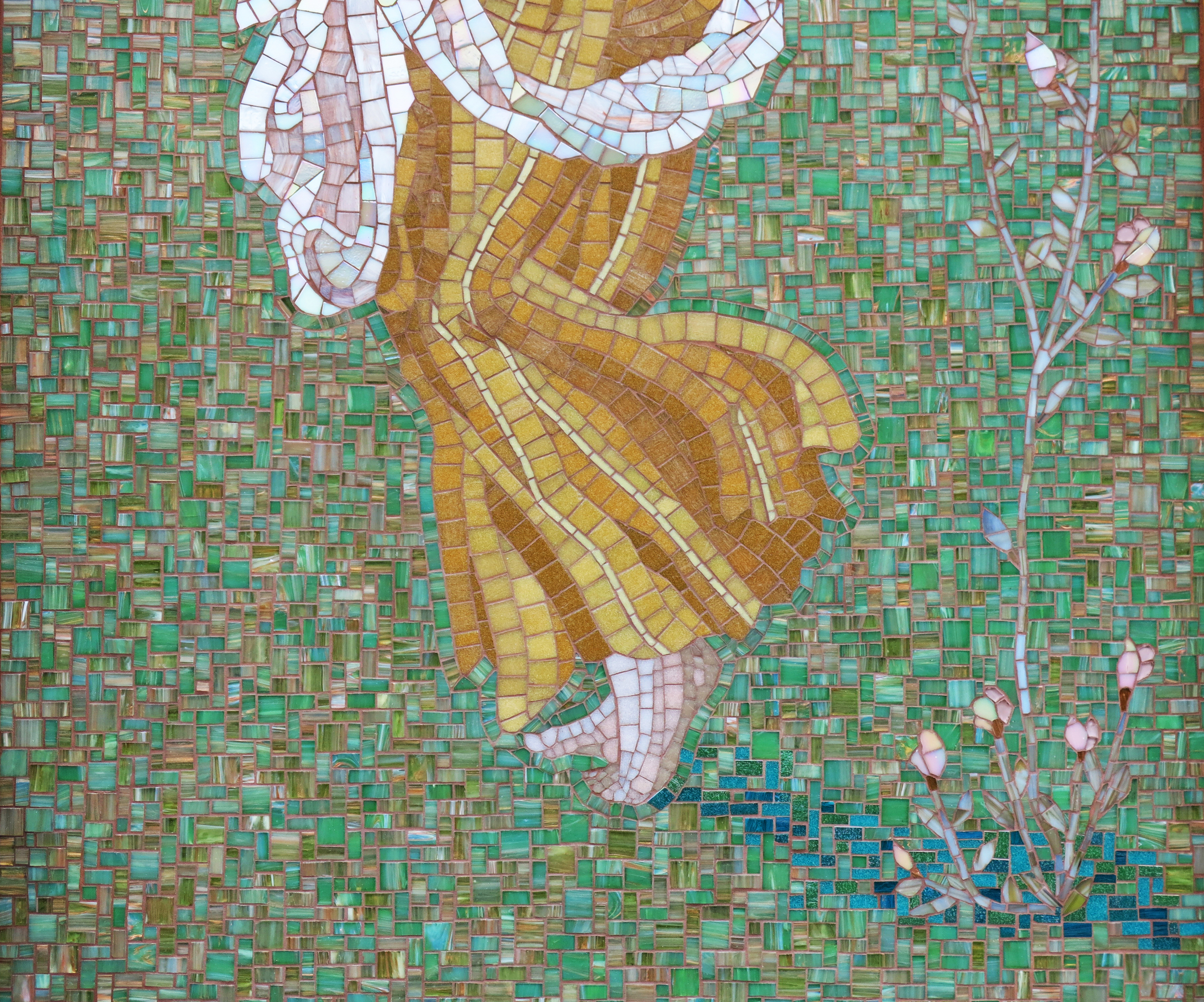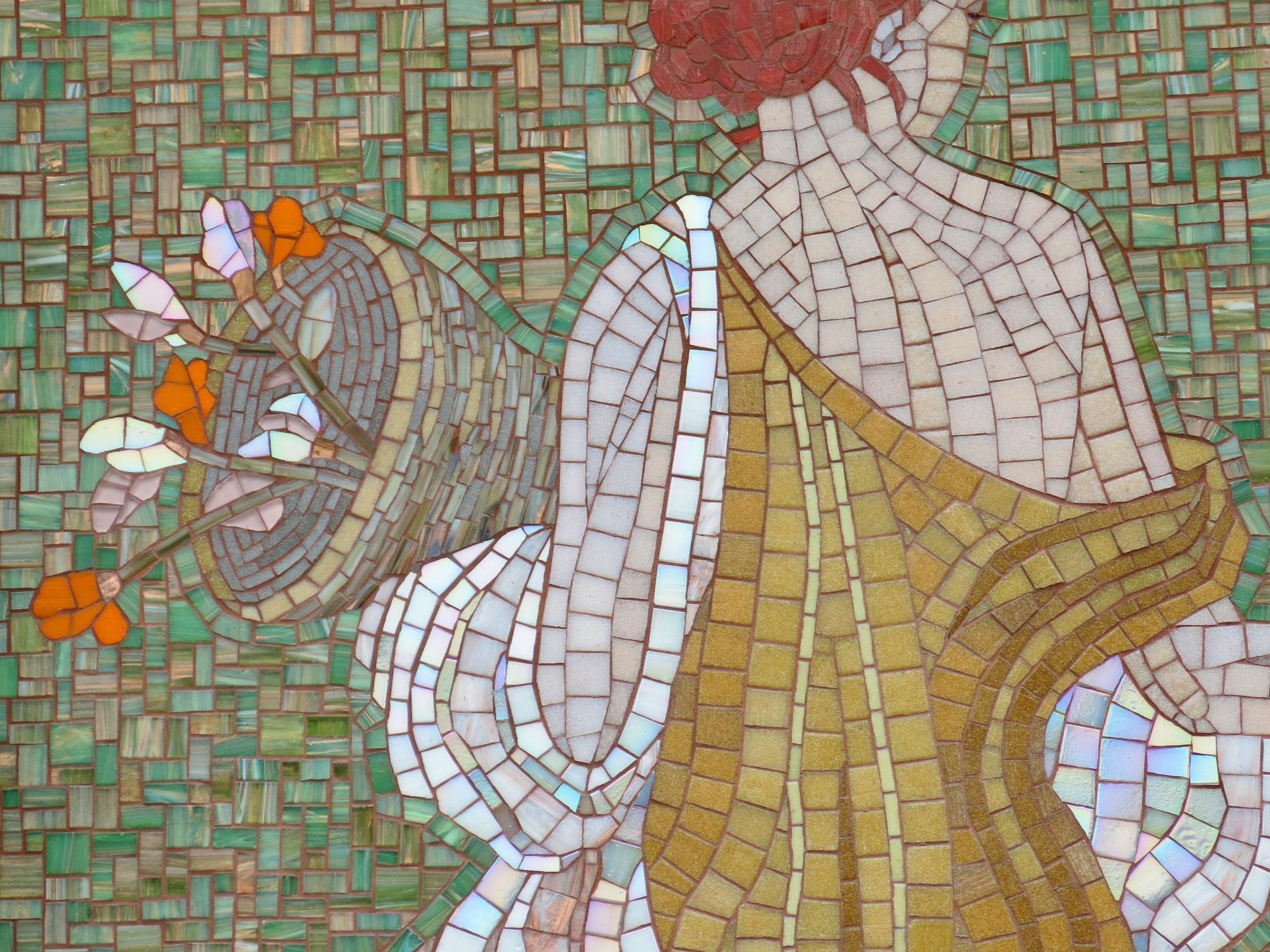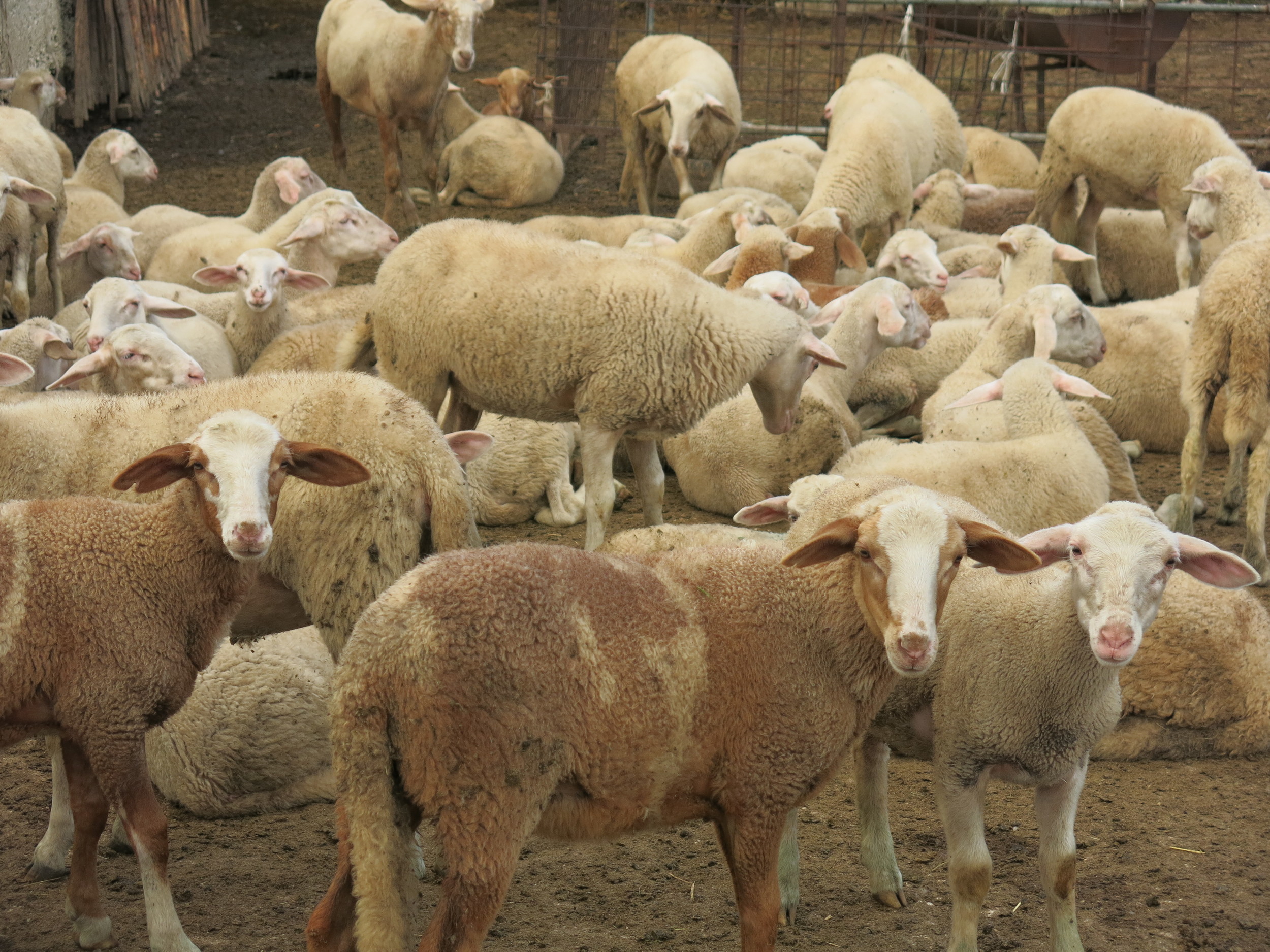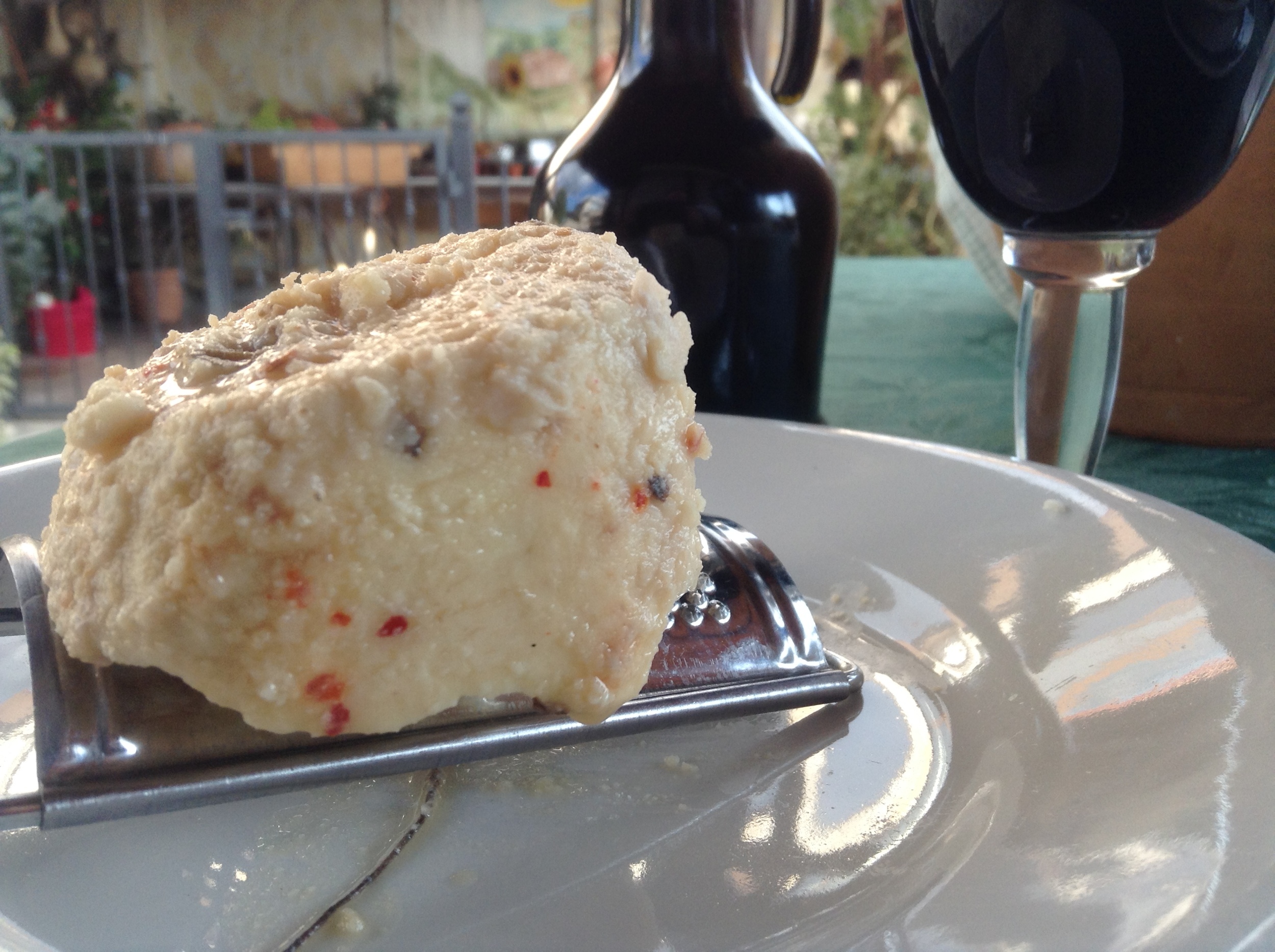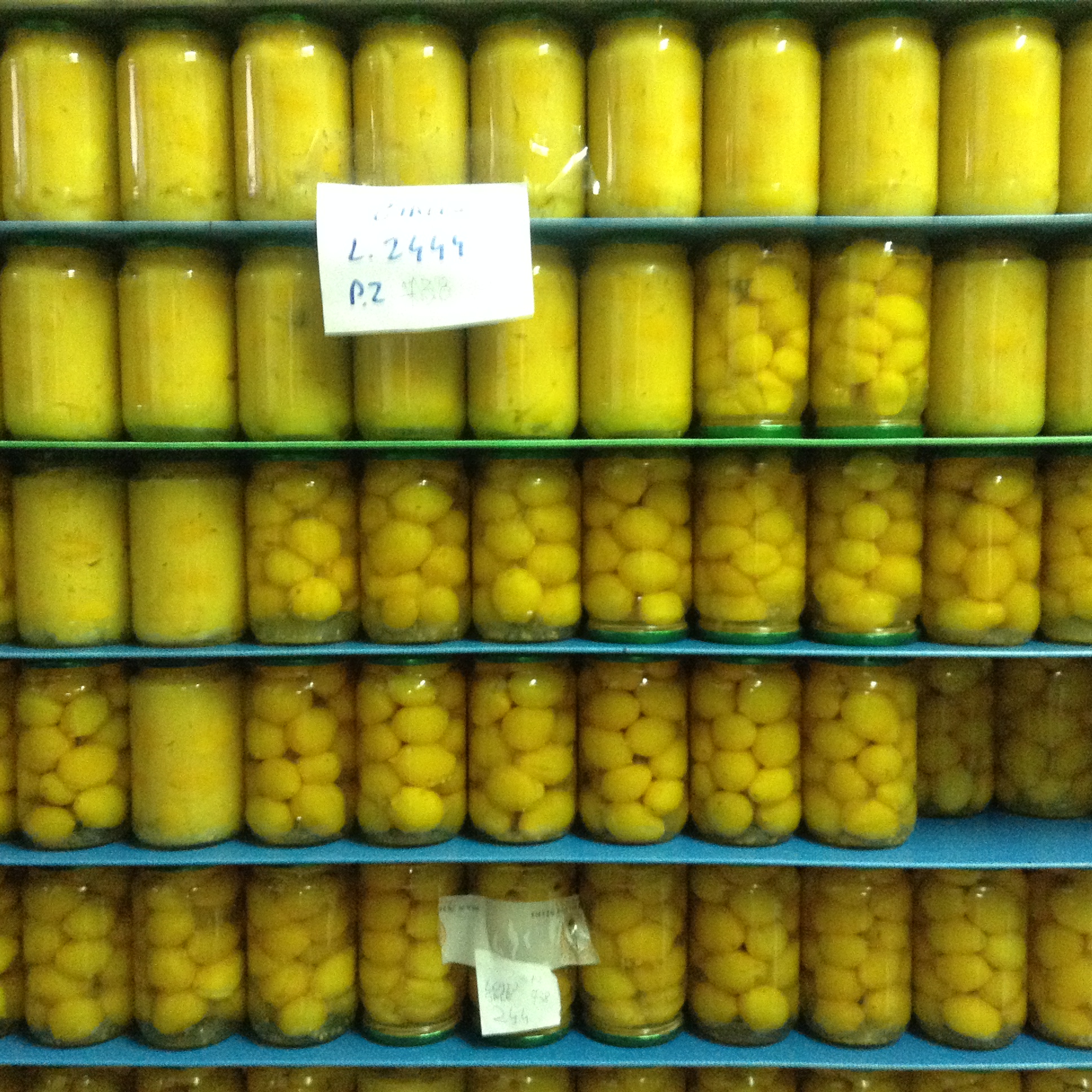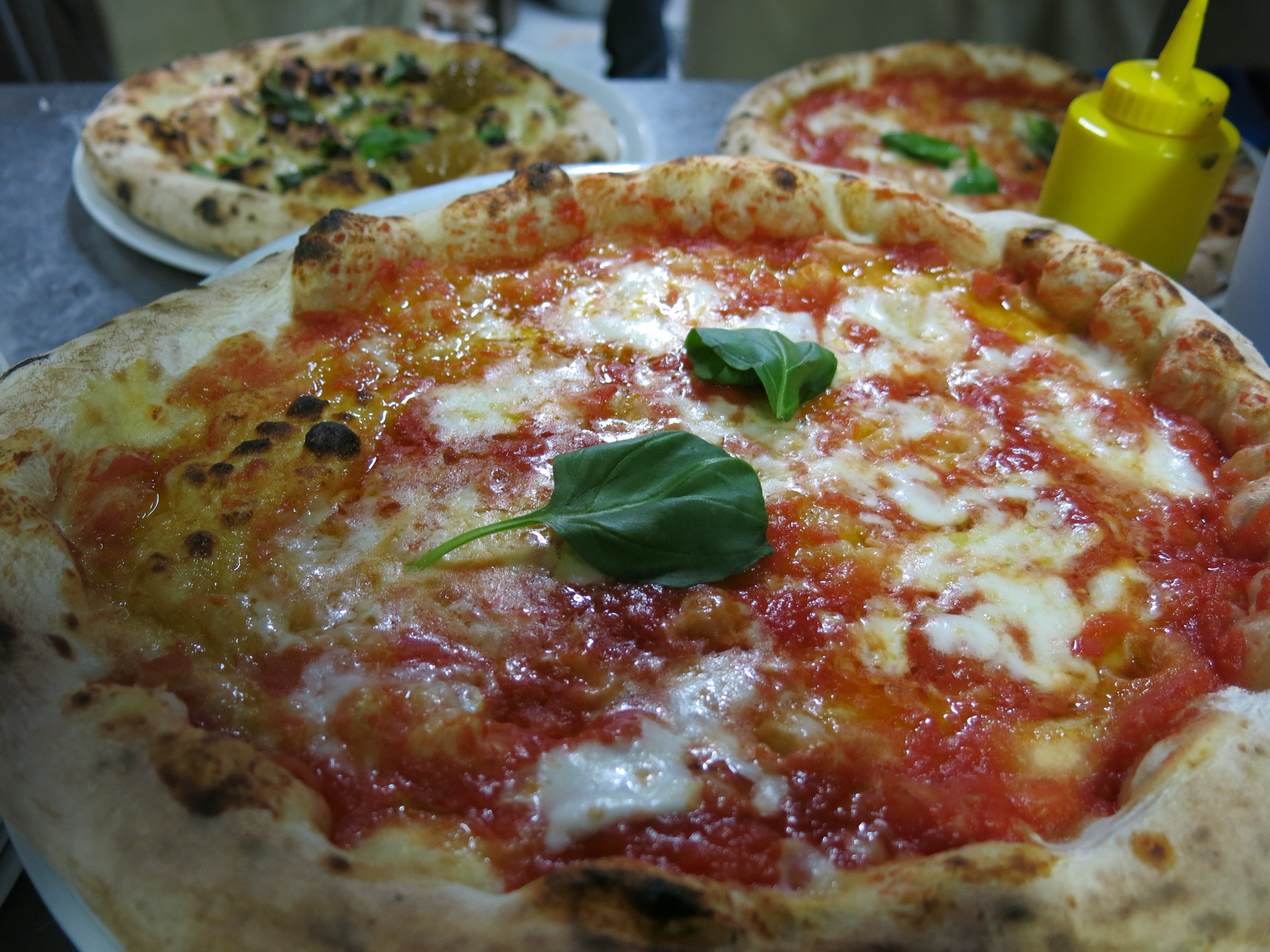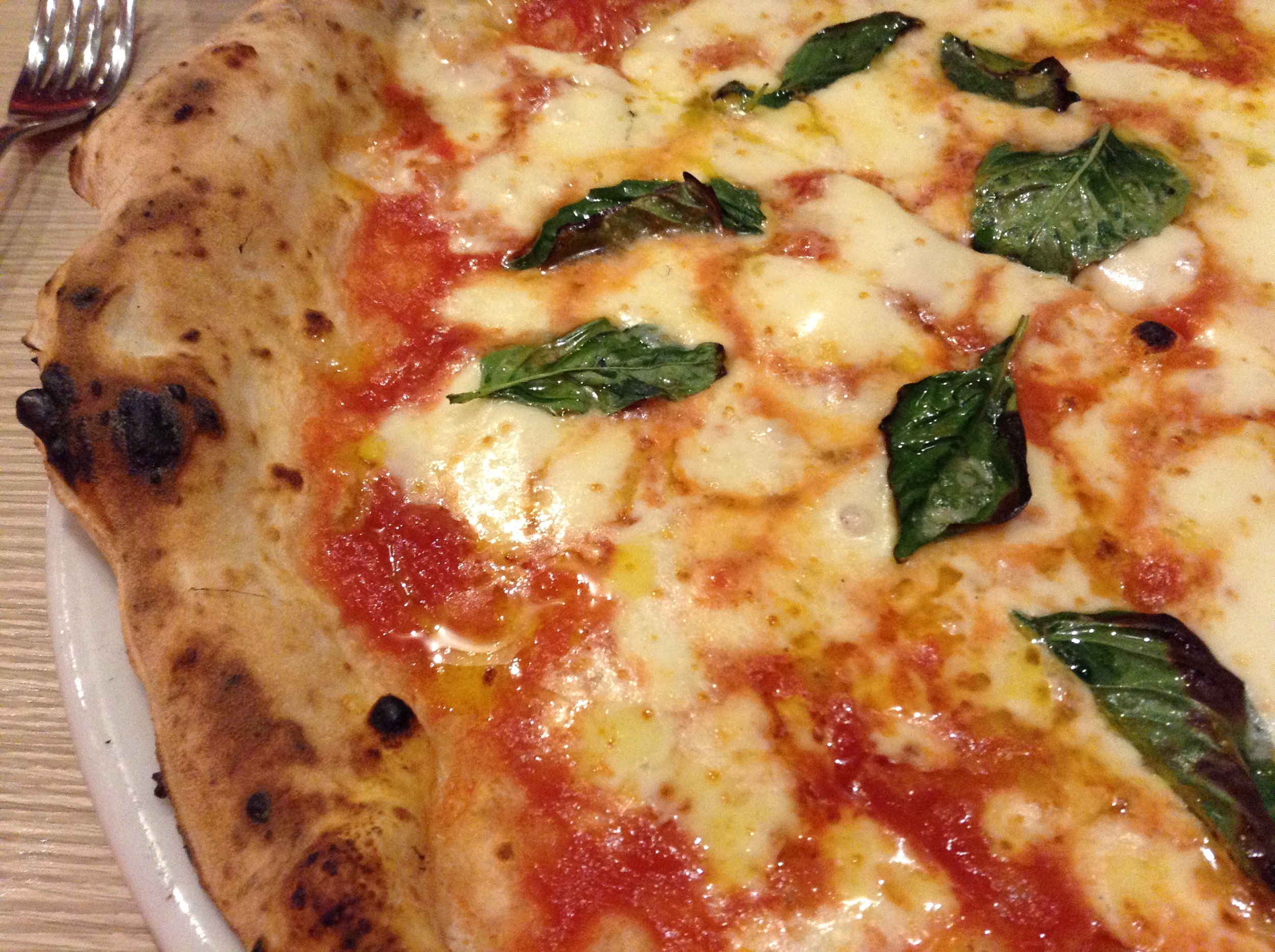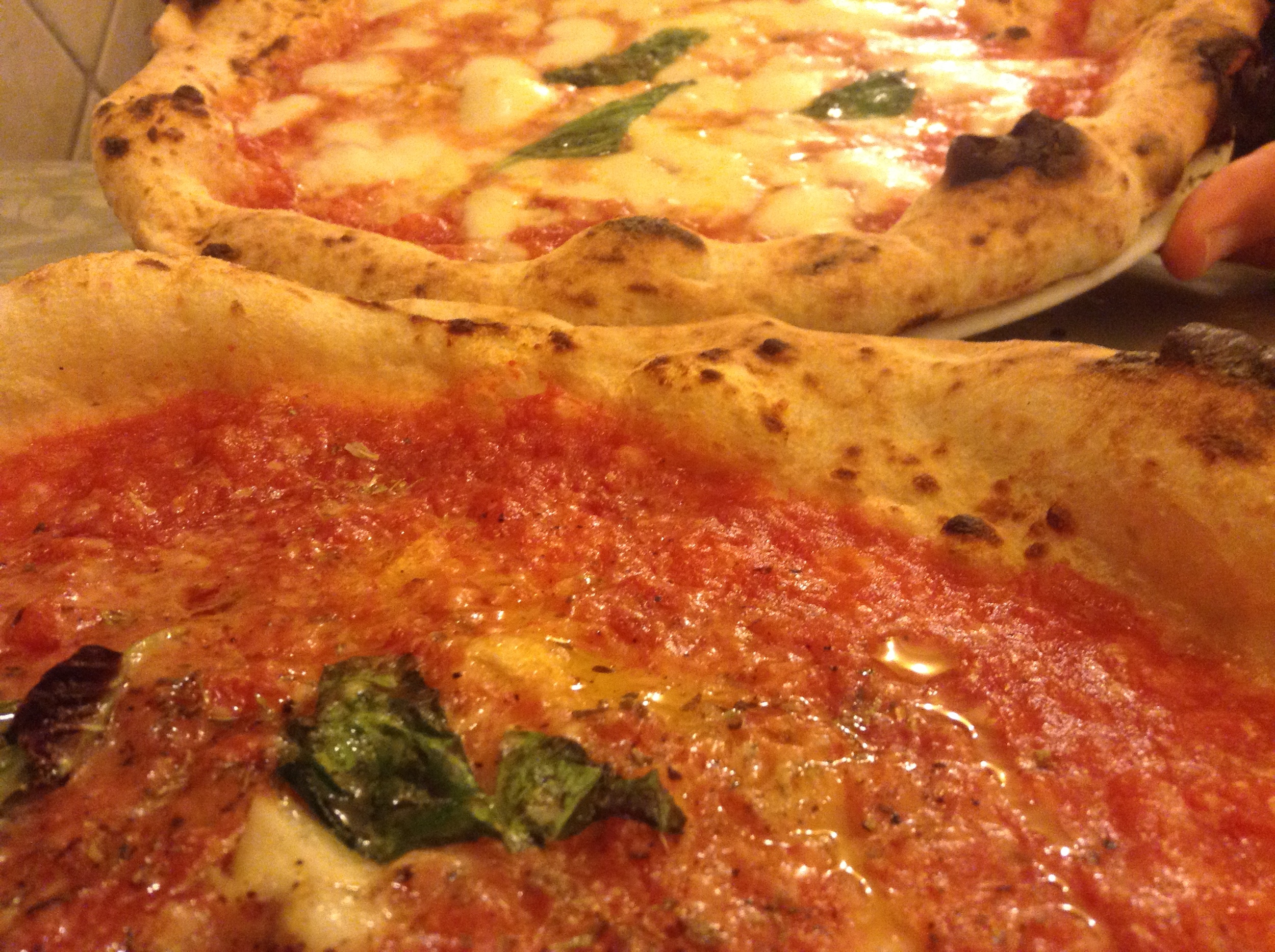CAMPANIA Traveling in Italy can be a passage back in time. Campania and Terra Felix, the happy land, are rich with antiquities and evidence of the past. Seeing something, and then hearing the associated story, is an immersive experience. On my last trip I saw and learned about wondrous places with hidden frescoes, mosaics in the field, two thousand year old amphorae, and centuries old grape vines. I would not have found them on my own.
I first explored the land of Falerno with Nicola Trabucco. It is an area where residents of ancient Rome resided, cultivated gardens, and grew grapes. Pliny the Elder wrote of the local Falernus, known as the nectar of the presses of Sinuessa, as being a wine worthy of the gods. Nicola has written of his life long passion for this countryside and the traditions of its peasant cultivators thusly:
“After thirty years lived as a ‘nomad’, circling the globe in my work, accumulating knowledge and esteem for cultures different from our own: these experiences have only reinforced, and constantly more and more, my ties to my native soil and birthplace, inspiring and driving me to choose the place of my childhood as the ideal spot to realize my dream: that of creating an important agricultural estate – the Ager Falernus – for the production of wine, olive oil, honey, and other crops and products, all cultivated according to the precepts of organic agriculture, with a total respect for the territory in which I operate.”
On a hike up Monte Massico, Nicola described a hidden treasure we were about to see. Past the stone foundations of ancient homes is the Cave of Saint Martin. Martin was a hermit monk of great holiness and divine favor. He lived during the sixth century, retreating to this self-imposed exile for 40 years, isolated and dependent on faithful followers to bring him food. The partially obscured cave is near the summit and holds stunning, delicately faded frescoes that date back to this period, or perhaps even earlier. The artist is not known and the murals are in disrepair, but the overall impact is one of profound mystery.
We sat high on the mountain, taking in breathtaking views of the surrounding valleys, drinking Nicola’s Aglianico, eating cheese, salumi, and crusted bread, and pondering Martin’s dedication to the contemplative life. Nicola recounted that for centuries this mountain has been a source of refuge and sustenance because of its green and fertile slopes. He described legends, long forgotten, of elves, mysterious grottoes, and sacred plants. One legend states that little elves worked in secret to make the land fertile, aerating the soil, and as a result, making the wine better to drink. Another speaks of the town of Nocelleto, near Carinola, where stands a lone majestic tree, la quercia del beneventano. It is an imposing spectacle of nature that experts think is actually three intertwined trees. The visual effect is that of three persons embracing and with great perseverance they are defending a secret. Older persons in the area remember being told that great treasures lay within the tree, but no one has ever found them. According to this story, these treasures were the spoils of a great pillage at the expense of a convoy along Via Appia. It was also believed that a curse would befall those who tried to take the treasure, because the souls of the robbers lived in the tree.
Via Appia was built in 312 B.C. and is considered the world’s first modern highway. Originating in Rome, it travels south down the coast to Capua, then southeast to the Adriatic Sea and the port city of Brindisi in Puglia. From Brindisi, Roman ships sailed to Greece and Egypt. Campania and Rome are linked through this ancient tale, thus hinting at the history of trade and travel between these regions.
Hearing these stories, and being in the same spots that the stories originate from, is a reminder of how much life has changed. Some practices no longer exist, and if they do, they are only in small, fairly unknown amounts. For example, the ancient Romans used to plant rosemary, apples, figs, and plums both upstream and downstream of their vineyards, with the thought that the grapes would absorb their scents.
Nicola recalled that the Roman tradition was to produce three types of Falerno: a fresh wine/juice to be produced and consumed in a few days, a wine to be consumed within a few years (givinum tenuous), and an even bigger Falerno prepared for a long life, maybe 100 years (givinum austerum). In accordance with his wish to combine his knowledge of ancient traditions with modern techniques, Nicola has also planted rows of rosemary around some of his vineyards.
Ask anyone in Naples who has worked with flour over the years—they know how the nature of the grain has changed. Master Pizzaiuolo Adolfo Marletta of the pizzeria La Spaghetatta in Vomero described how his father, a pizzaiuolo in the 1960’s, could take collapsed dough and re-form dough balls the next day because there was less gluten in the flour; overall this dough was more pliable and easier to extend by hand.
In Mondragone, along the Tyrrhenian Sea and the Appian Way, there is an open field containing a ruin, with a small section of mosaic flooring. To get to it there is a rough road, which passes some overgrown and untended Roman aqueducts that are almost hidden from view. We then walked through a fence into a nondescript field where this fragment of a mosaic floor remains. The small black and white stone squares illustrate fish and a horse like creature. The villa that housed the mosaic was called Villa San Limata, and dates back to the first century. It belonged to a wealthy Roman merchant and contained a system of thermal waters. It had direct access to the sea, as the sea came into the house through a tunnel. The villa was transformed into a cultural baptistery three to four hundred years after Christ, and then disappeared completely around the fifth century.
Mosaics proliferated as an art form across the Roman Empire, from Antioch to Africa. Different styles included marble, tile, clay, glass paste (smalto), stone, and shells. They were popular and plentiful in private homes and public venues. These small, black, white, and colored squares depicted fish, animals, flora, objects, myths, people, and events of everyday life. Those that remain are an invaluable record of daily activity, clothing, agriculture, hunting, means of cooking, sport, love, and warfare, and give us clues as to what mattered to the people. Our mosaic interpretation of a fresco of Flora, who was the Roman goddess of spring, at Spacca, is homage to this epic art form. It is also an example of our commitment to the tradition of storytelling and collaborations—in this case, between Domenico Mazzella, Ginny Sykes and Julia Sowles-Barlow, all of whom have deep ties and a love of the arts and culture of Italy and who together brought this contemporary vision to life.
Southeast of Monte Massico lies Benevento and the nearby National Park of Matese. This ancient land was first inhabited by the Samnites and later colonized by the Romans.
“It is a province filled with history, archeological sites and marvelous landscapes, and it surprises for its atmosphere of composed mysticism that has always characterized it. It is akin to blurring the confines of present and past, and means discovering the folkloric and gastronomic traditions that root themselves in distant history.”
My interest in Matese was finding artisanal Pecorino. I first tasted sheep’s milk cheese from this area while working with Franco Pepe in nearby Caiazzo. The sheep graze in pristine pastures at high elevations. The flavor profile of their milk changes with the seasons. Flowers and grasses vary over the year, and as a result, so will the flavor of the cheese. Antonio Sangiovanni of Agriturismo Sangiovanni was our guide into the mountains and to a farm we would have not found without him. In a remote spot, past mountain lakes, streams, and open fields, we arrived at a solitary family farm containing 700 sheep. I was excited, as for years I had seen the mountains of this park from afar. I knew of the farmers, their strong embrace of artisanal ways, their folk beliefs, and cultural traditions. Although we arrived unannounced, the family quickly warmed up to us as we expressed sincere interest in their work and respect for the practices they continue to follow generation after generation. I selected a variety of pecorino cheeses, some picante, some milder, which I brought back to the Lombardi family so we could enjoy them together. The Lombardi’s are the proud producers of a particular pecorino, Conciato Romano, which is made in the same manner, as did the Romans two thousand years ago. It is in great part the time I have spent with the Lombardi family at their agriturismo, Le Campestre in Castel di Sasso, over many years now, that has nourished my appreciation and respect for this rural way of life.
ISCHIA
Next, after a small stop in Naples, I headed to Ischia with Domenico Mazzella. The extraordinary curative properties of the thermal waters on the island of Ischia in the Bay of Naples have been known for over 2500 years. The springs and ancient natural baths are of literal legend. We entered the baths from the beach side, walking through great cavernous volcanic walls made up of a soft almost sand-like soil. The roots of hanging foliage help hold it together. The thermal baths now are the same as what they were when these healing waters were discovered. We walked in the same stone pools, steamed in the ancient stone rooms, showered under the same thermal spring waters. The healing properties are legendary and the origins recorded in story:
“It is written that the giant Tifeo was imprisoned by Zeus inside Mount Epomeo. After centuries of punishment the giant implored Venus to request his pardon from Zeus. When hot waters ran from the repenting rebel’s eyes, the father of the Gods was moved by pity. He thus pardoned Tifeo and transformed his tears into natural thermal waters.”
A natural reflexology pool was a highlight. Cold water alternates with warm, and one slowly walks across the stones at least ten times in a circular fashion. This action is said to provide serious and lasting health benefits. The more times you walk, the more benefits you will receive. It is a walking meditation brilliantly conceived from nature. The entire location is simple, unadorned, and the feeling was magical.
The wine Biancolella, and rabbit, the culinary symbol of the island, were also the focus of our time there, visiting the Mazzella vineyard (no relation to Domenico, or as they joked, perhaps there is) and having lengthy discussions. Our guide was the vigorous and extroverted Antonio Mazzella, who at close to seventy years works the land and nurtures his rabbits high above the waters. Antonio works with his son Nicola, the third generation of winemakers. The Biancolella grapes grow in a perfectly balanced eco-climate of sea, salt, sun, and air, infused with the scents and tastes of the herbs, flowers, and grasses that grow right alongside the vines in the same volcanic soil type as the thermal baths.
Wine has been made on the island since the eighth century B.C., when Greek colonists chose Ischia as their far western outpost in the Mediterranean and brought their system of terracing, training, and pruning grapevines. These methods are still used today. The soft white Biancolella is famous for its minerality and flavor that comes from this particular volcanic soil and sea-salt air. It pairs wonderfully with Coniglio all’Ischitana.
According to Carlo Petrini, founder of the Slow Food movement, “it [rabbit] represents peasant wisdom: nothing is wasted. In fact, the rabbits eat a diet prescribed by the ancients – fruit, tree trimmings, fig leaves, vine shoots and tasty greens.” This Ischian rabbit dish has been a typical dish for centuries due to the abundance of wild rabbits on the island. Though most farmers today breed rabbits in cages, the ancient and traditional way to breed rabbits was to let them run free in narrow tunnels three to four meters long underneath the ground. Antonio prefers the cages, so he can separate out the male rabbits and control the number of litters. Less offspring for the mother rabbit allows greater quantities of milk to be shared.
Antonio was a masterful storyteller; painting a vivid picture of his acquisition of the land and the many years he has worked it. The vineyards, high in elevation, seem as if they are falling into the sea. As we enjoyed stunning vistas, Antonio shared his thoughts on raising rabbit as well as the evolution of his family’s wine production over many years. The path to the vineyard is reached from high above, and is cut through the soft volcanic soil. The descent to the vineyards is quite steep and one must descend these caverns without slipping on the dry ground. At times, the use of a rope embedded into the rock is necessary to secure your footing. The grapes are hauled up for production upwards of twenty trips during the harvest—a robust and exhausting task. It takes a deep love for the land and respect for the craft in order to thrive and endure such taxing conditions. The proof is in this special wine. We are proud to have introduced Cantine Mazzella wine to America.
IN THE SHADOW OF VESUVIO ON THE WAY TO THE AMALFI COAST
Amphorae, used for the storage of wine, oil, and other prized liquids, date back eight thousand years. Originally made of earthenware and coated with beeswax, they were buried in the ground to ensure proper atmospheric conditions.
With the expansion of the Roman Empire, the form of the amphora took precedence over its beauty. They were no longer decorated in the manner of the Egyptians and earlier civilizations. Ease of transport while preserving the integrity of the content was more valued. To my eye, urns are beautiful without embellishment. Winemaker Vincenzo Ambrosio of Villa Dora, located in the Parco Nazionale of Vesuvio, discussed the history and purpose of a two thousand year old amphora, (urn) still in perfect condition, that was found on their property, his farm. This vessel, called a Dolia, was an important archeological find and that the Romans used it to ferment the wine. Scientific analysis of fragments inside the amphora confirmed that the Romans drank Piedirosso. This was a local wine dating back to the eruption that buried the people of Pompeii. As it was 2000 years ago, the same wine in the same location continues to be made today. Smiling as he sniffed at the mouth of the amphora, Domenico commented that he “could still smell the Romans.” Vincenzo also affirmed that oil and wine cultivation used to go hand in hand. There are a few wine makers who still follow this practice, but today most production of oil and wine are separate.
AMALFI COAST AND INTERIOR (TRAMONTI)
Wines from Tenuta San Francesco, in Tramonti, located about an hour from the Amalfi coast on a magnificent stretch of interior land, have their own special story. For example, while the Tintore di Tramonti is especially cared for by winemaker Gaetano Bove, the star attraction is the 500 year-old mother grape vine that has been in continuous production. It is said to exist because of “the gesture of a woman.” The women cut the grass, and they were careful not to disturb even the smallest emerging vines from the ground. Whether myth, legend or fact, this simple phrase illustrates the deep relationship between land, people, and their culture. The seeds were planted at a specific time of the year, under a certain moon, and in rhythm with the felt nature of both planter and land. This is an ancient biodynamic precedent. To see this vine in person is enough to make one weep, existing as a marvel that is hard to describe. Its branches extend hundreds of feet in each direction, and its twists and turns over the centuries have been lovingly tended and supported with a variety of stakes and trellises. Gaetano is bronzed, calm and clear-eyed, gazing as he speaks as if he sees a truth far out toward the horizon. He, like the other makers we encountered on this journey, carry on practices that are what we all love about Italy. Person by person, with hard labor, and a profound love for the lands they know so well, we are fortunate to have them as caretakers and proponents of a valuable legacy.
In Furore, we viewed another cultural and ongoing legacy: that of “the town that does not exist.” Furore is known as such because there is no central piazza or concentration of homes, and no telltale sign along the coast that there is a village high above. Its local governance has overseen the creation of murals on the exterior walls of the town by artists from Italy and all over the world since 1980, spearheaded by Sindaco Raffaelo Ferraioli. These brightly colored murals celebrate the traditions and interpret the history of the area. Furore is a quiet hidden gem high above and between Amalfi and Positano. It is also known as the place where the sea meets the sky. From the balcony of the Hotel Bacco where we enjoyed the astonishing cooking and care from the Ferraioli family, we gazed for hours upon the smooth transition of blues that is seamless and soothing.
Furore is also known for exquisite rural hiking trails within a five-minute walk down the road, including a hike we did, called “The Path of the Gods.” For us, it meant a slow and enjoyable four-hour trek from Furore to Agerola, Agerola to Positano, where the final descent is 1000 stone steps to sea level. The terrain shifts from gentle hills, terraced vineyards and gorgeous natural rock formations, to challenging rocky ascents and interior cool woods where the birds are in charge. The path then dramatically opens out to sweeping views of the waters where you can even see Nureyev’s tiny island. One is constantly meandering in and out of sight of the water. The high intensity rock climbs, with dwellings carved as if by hand into the sides of steep inclines that are swept by the winds of centuries, remind us that these romantic vistas were also born out of the necessity of creating routes of transport and sheltering outposts along the way. The Path of the Gods was a climactic experience. The walking and alternating views of horizon and interior provided time to step back and consider the profound sweep of history we had experienced, all within a small region that is both humbling and deeply inspiring to know about.
Photos/videos credited to Jonathan Goldsmith except where noted.
